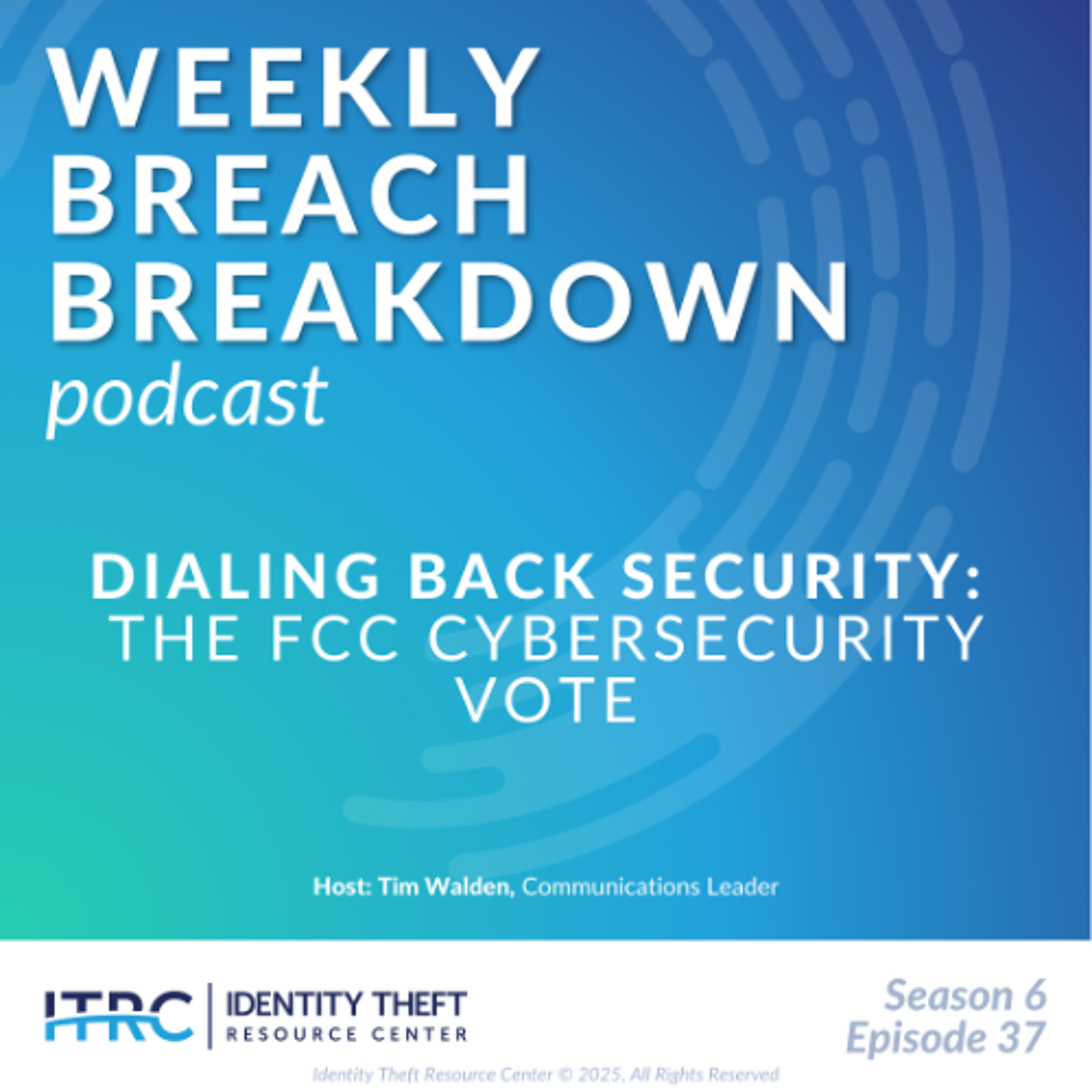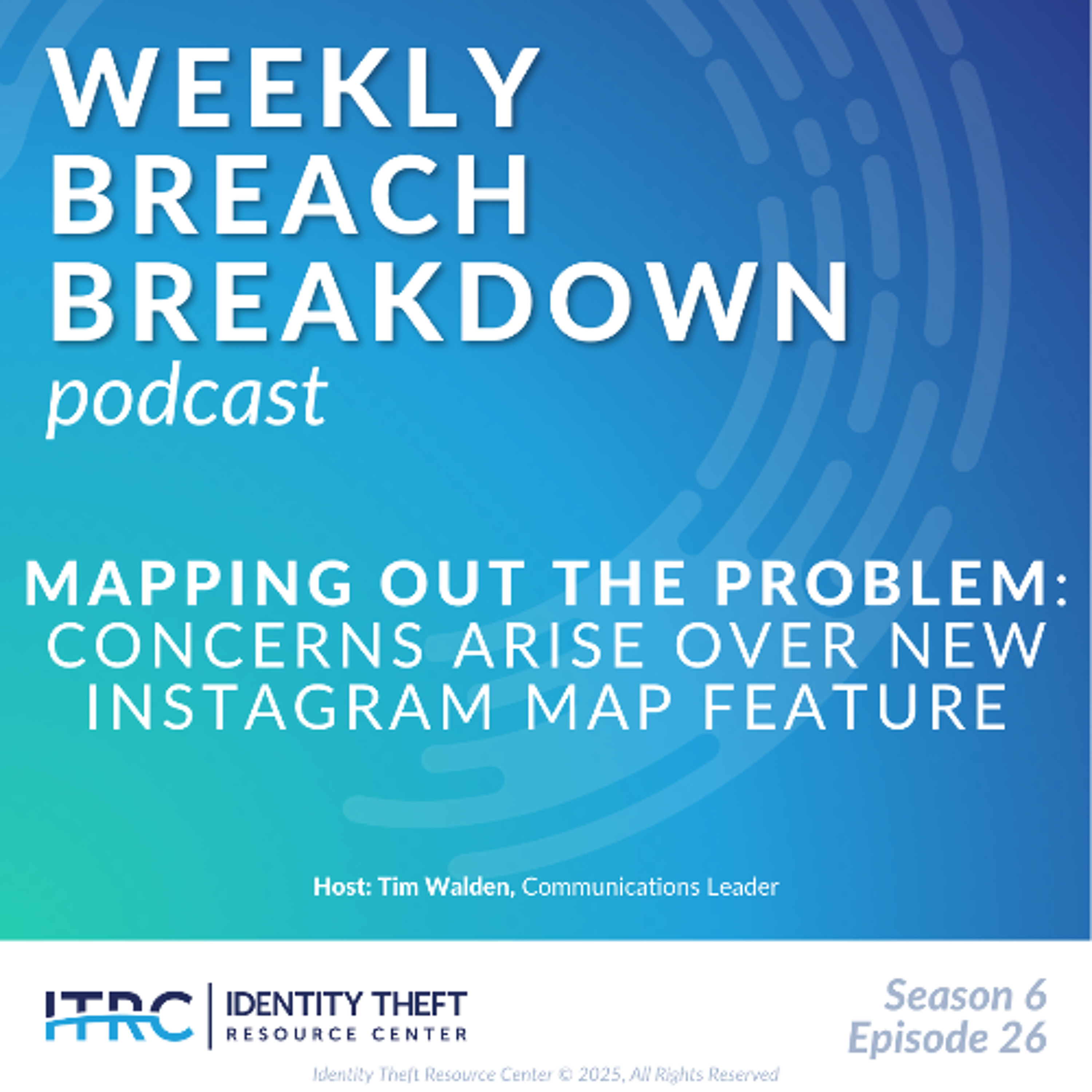Earlier this month, Instagram rolled out a new feature called Instagram Map. The idea sounds harmless enough: a way to see your friends’ real-time locations, similar to Snapchat’s Snap Map or Apple’s Find My. However, here’s the issue: Instagram Map prompts you to share your precise location every time you open the app, even if you’re not posting.
Show Notes
Follow on LinkedIn: www.linkedin.com/company/idtheftcenter/
Follow on Twitter: twitter.com/IDTheftCenter
Show Transcript
Welcome to the Identity Theft Resource Center’s (ITRC) Weekly Breach Breakdown for August 22, 2025. I’m Timothy Walden. Thanks to SentiLink for their support of the ITRC and this podcast. Each week, we break down the latest data security incidents making headlines. Today, we’re focusing on a recent incident involving Instagram that exposed sensitive information for millions of users through a little-known feature called Instagram Map.
Earlier this month, Instagram rolled out a new feature called Instagram Map. The idea sounds harmless enough: a way to see your friends’ real-time locations, similar to Snapchat’s Snap Map or Apple’s Find My. However, here’s the issue: Instagram Map prompts you to share your precise location every time you open the app, even if you’re not posting.
That’s a major shift from the way most of us think about Instagram: where you decide what to share and when. Instead, this is an always-on, background form of sharing.
Privacy experts warn that this kind of location sharing can be risky, especially for teens and young adults. It can reveal sensitive patterns, such as where you live, work or attend school. It can also create unhealthy dynamics in relationships if partners or friends use it for surveillance. In some cases, the Instagram map can even put people in physical danger.
So, what can you do about the Instagram map?
- Turn off location services: Go to your phone’s privacy settings and disable location access for Instagram or set it to “While Using the App” only.
- Check Instagram settings: Within the app, avoid tagging your exact location in posts or stories. If you do, wait until after you’ve left that location before posting.
- Review past posts: Consider removing location tags from older posts that could reveal patterns about your home, work or travel habits.
- Parents, be cautious with children’s activity: Never post real-time location data tied to your children’s schools, activities, or frequent hangouts and teach them to do the same.
Meta is urging users to review their privacy settings and limit location sharing. The ITRC also recommends staying alert for suspicious activity both online and offline. If you receive unexpected friend requests, phishing messages or see unusual logins, update your password and review your account security immediately.
Your personal information is valuable, including your location at any given time. Before you decide to share it, consider who might see it and what they could do with it.
Data exposures don’t always involve stolen Social Security numbers or credit card data. Sometimes, it’s seemingly harmless details like sharing your location through the Instagram map that pose the biggest risks. The lesson here is to remain mindful of what you share, where you share it and how often.
If you have questions about protecting your personal information or about the new Instagram map misstep, the ITRC is here to help. You can speak with an expert advisor by phone or text, live chat on our website, or send us an email during regular business hours (6 a.m. to 5 p.m. PT). Just visit www.idtheftcenter.org to get started.
Thanks again to SentiLink for their support of the ITRC and this podcast. Please like this episode and subscribe wherever you listen to your podcasts. Next week, be sure to catch our sister podcast, the Fraudian Slip. Head of Public Sector at Socure (and an ITRC Board member), Jordan Burris, will be our guest discussing job scams – one in particular that impacted Socure. We’ll be back in two weeks with another edition of the Weekly Breach Breakdown. I’m Tim Walden. Until then, thanks for listening.
Listen On
Also In Season 6
-

The Fraudian Slip Podcast: Gen – ITRC Predictions for 2026 - S6E12
Welcome to the Fraudian Slip, the Identity Theft Resource Center’s (ITRC’s) podc -

The Fraudian Slip Podcast: Identity Theft Resource Center - 2025 Business Impact Report - S6E11
Welcome to the Fraudian Slip, the Identity Theft Resource Center’s (ITRC’s) podc -

The Weekly Breach Breakdown Podcast: Dialing Back Security – The FCC Cybersecurity Vote - S6E37
Welcome to the Identity Theft Resource Center’s (ITRC’s) Weekly Breach Breakdown -

The Weekly Breach Breakdown Podcast: A(I) House of Cards – ChatGPT Issues Impact Users - S6E36
Welcome to the Identity Theft Resource Center's Weekly Breach Breakdown for Nove
